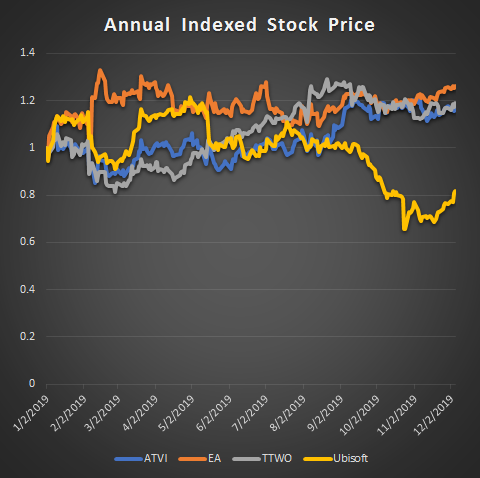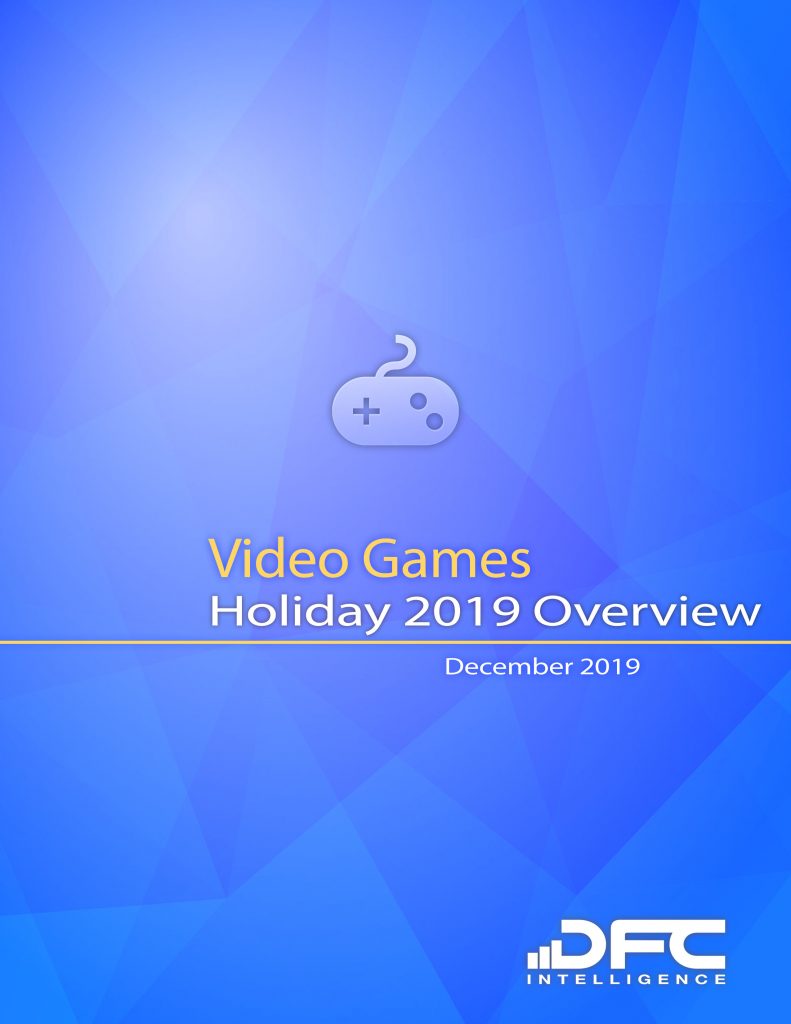Where are the Video Games for Holiday 2019?
The last three months of the year have historically been make or break time for the video game industry. However, as the PlayStation 4 and Xbox One slowly decline, 2019 is different. New offerings for the end of 2019 are sparse. Thankfully, in today’s market, the investment community has a better understanding of long-term industry trends. There is surprisingly little panic.
The latest DFC Intelligence brief looks at holiday 2019 and how major publishers are handling this slow year. The conclusion is the industry has done a good job moving to a more year-round service model.
There is no mistaking this is an ugly year on the console game side. While PC and mobile games chug along, the console business waits for the PlayStation 5 and Microsoft’s Project Scarlett.
During 2019, market leader Sony showed signs of fumbling. Management turnover, focusing on movement to the new generation, and concern over cloud competition with Microsoft, Google and others, preoccupied Sony. The focus was more on PlayStation 5 and cloud gaming. Less attention was paid on continuing to engage the consumers that bought over 100 million PlayStation 4 systems.
Luckily for Sony, Microsoft has all but given up on the Xbox One as it busily prepares for Xbox One. This left Nintendo to fil the void. Arguably, Nintendo had its best year ever. In the first half of Nintendo’s fiscal year ending 9/30/2019 hardware revenue was up 37% and software revenue was up 39%.
Outside of Nintendo, the holiday 2019 offerings are bleak. Electronic Arts has its annual sports offerings and the largely single-player Star Wars Jedi: Fallen Order. Activision has a new Call of Duty. In September, Take-Two Interactive launched Borderlands. That is about it.
Surprisingly stocks of third-party console publishers have mostly been up in 2019. The market has become more sophisticated to the games-as-a-service model that the industry is moving towards. Quality over quantity is the new theme.
France based Ubisoft is probably the biggest failure of 2019. Ubisoft’s long-term strategy of throwing products against a wall to see what sticks is clearly not working in today’s market. Ironically, Tom Clancy’s Ghost Recon Breakpoint proved to be exactly that. After its disappointing October launch, Ubisoft lowered its fiscal year revenue forecasts to €1,450 million from €2,185 million. This is because they decided to delay major product releases to spend more development time improving quality. Investors were actually not too harsh on Ubisioft stock.
The good news is that the struggles of major players open all kinds of opportunities. This holiday season, Nintendo is jumping in to fill the void. However, there are many openings for opportunistic players. Consumers still like to buy new things during the holiday season. The Outer Worlds, an indie title from Take-Two’s Private Division, is an example of a product that can enjoy greater success in this environment.
The final year of this decade will go down as relatively uneventful for the video game industry. However, it is also the harbinger of major changes.
- With a new console cycle, key issues DFC Intelligence is looking at going into 2020 include:
- As Sony’s market share in video games declines how will investors react?
- How will a surging Nintendo impact sales of new hardware from Sony and Microsoft?
- Can Sony and Microsoft compete in the broader trend to portable devices?
One area we do not think will be a major focus in 2020 is cloud gaming. As we mentioned, the launch of Google Stadia shows cloud subscription services have a long way to go. These services may have some potential bundled with hardware, but standalone services like Stadia do not cut it.




